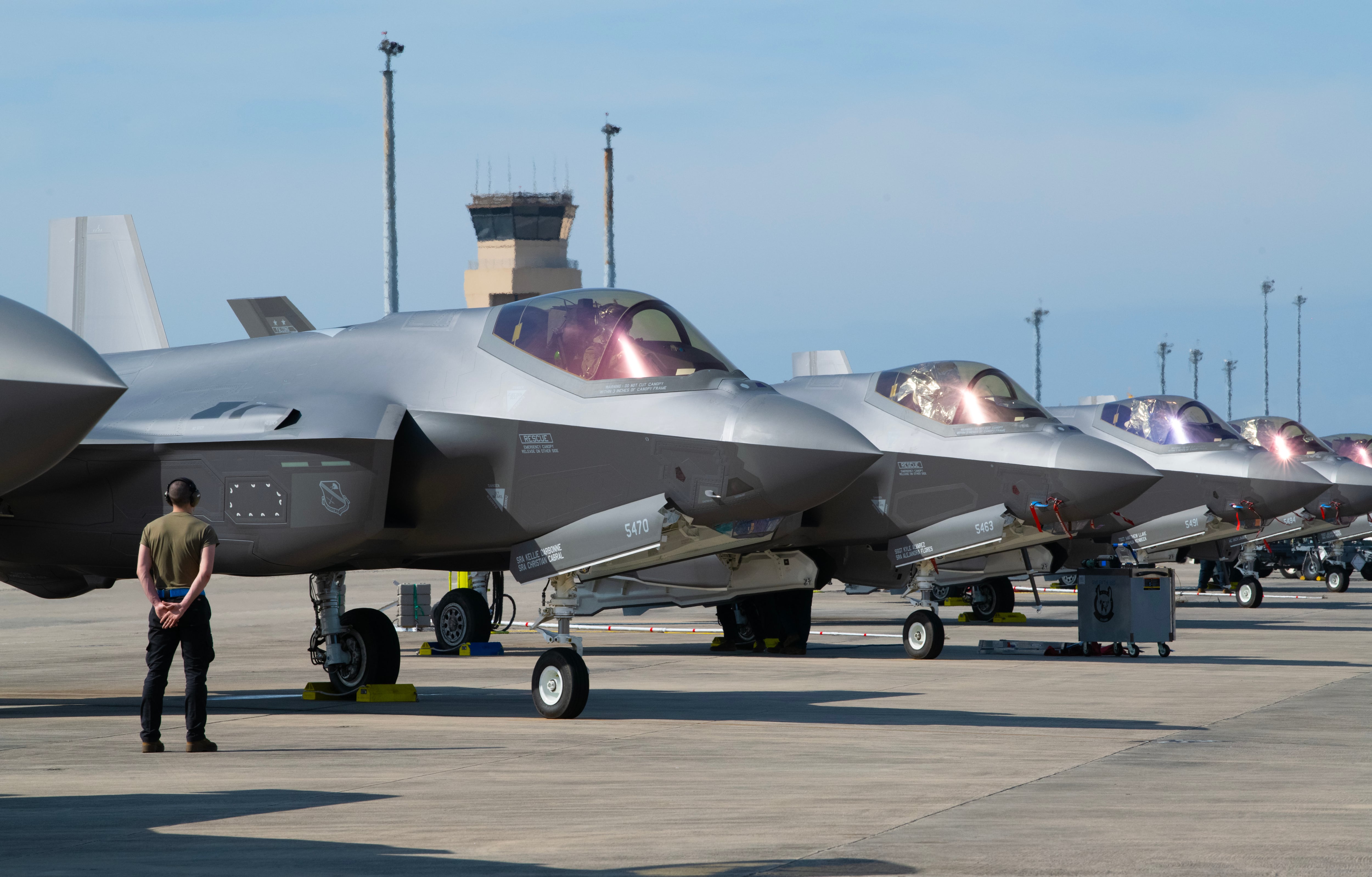Update: This story was updated to note that Ms. James is chairwoman of the Defense Business Board and serves on the board of Aerojet Rocketdyne, a maker of jet propulsion systems.
At the McAleese & Associates conference in Washington on March 15, Secretary of the Air Force Frank Kendall expressed worry about the Air Force decision to not move forward with a new engine for the F-35, citing difficult budget choices. Having served as secretary of the Air Force, I understand better than most how tough these decisions can be and I also share his worry.
Secretary Kendall has been one of our most clear-eyed leaders, articulating the challenge of China’s military capabilities for years. He understands that ensuring a free and open Indo-Pacific squarely depends on fielding military capabilities that will deter today while also buttressing an enduring commitment to the region that will check future generations of China’s autocratic leadership. There was no better illustration of the challenge when just a few weeks ago, China’s new Foreign Minister Qin Gang warned that “no amount of guardrails can prevent derailing and there surely will be conflict and confrontation” with the United States.
One challenge that Pentagon leaders must always face is balancing investments between current capabilities and future systems. There is no better illustration of this tension than U.S. munitions production for Ukraine after years of underinvestment in capacity have left us struggling to catch back up. When it comes to the Indo-Pacific, we need to be careful to not sacrifice the immediate for the future. We must support both.
Unfortunately, when it comes to air power, this year’s budget misses a critical opportunity to field new engine technology by 2028 that will dramatically multiply our capability in the region and improve deterrence through the F-35 program. The F-35 is best known as our fifth generation tactical fighter, but it does so much more as a highly advanced sensing node with tremendous computing power. As we develop a fully networked force with our allies and partners, the ability of the F-35 to collect and synthesize data will be an incredible force multiplier as part of Joint All Domain Command and Control, or JADC2. To harness these capabilities, our services need a much better engine.
Until this year we were on the right path. The Air Force has funded a competitive program called the Adaptive Engine Transition Program or AETP, that has led to groundbreaking advancements in engine technology that will significantly improve the lethality, readiness and durability of our most advanced fighter and field those capabilities in just a few years. As part of a difficult budget environment, however, the Air Force decided to cancel AETP and punt on next generation engine technology to a future sixth generation fighter. Instead, they are supporting a more limited upgrade to the current Pratt & Whitney built F135 engines on the F-35.
While an upgrade of the F135 should improve durability, it neither offers the leap in capability that a competitive AETP program provides, nor does it offer the long-term savings that a more efficient engine offers. For example, technology developed within the AETP program has established 30% greater range, 20% greater acceleration and two times the thermal management of the current engine. It can do this through adaptive cycle technology that dramatically improves efficiency and an integrated third stream cooling system that will be able to handle future iterations of computing requirements. This is the type of capability that a competitive program between Pratt & Whitney and General Electric is already developing for our warfighter.
If this next generation technology can be ready, it is critical that we apply that technology to current platforms to address near term threats. It is now up to Congress to ensure that we get back on track and fully optimize this generational technology so that we can meet the challenge posed by China and improve our deterrence.
Deborah Lee James, who is chairwoman of the Defense Business Board, served as the 23rd secretary of the Air Force from 2013-2017. She serves on the board of jet propulsion manufacturer Aerojet Rockeydyne, as well as other defense-related corporate boards.
Have an opinion?
This article is an Op-Ed and as such, the opinions expressed are those of the author. If you would like to respond, or have an editorial of your own you would like to submit, please email us.
Want more perspectives like this sent straight to you? Subscribe to get our Commentary & Opinion newsletter once a week.









